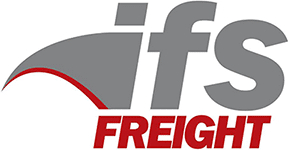Inbound vs Outbound Freight: 5 Important Differences

A goal of many businesses is to find a way to improve operations. Whether your business is creating a new supply-chain management plan or updating your current operational plan, it is important to consider all options, including inbound or outbound freight logistics.
This blog serves as an outline to understand the important benefits and differences between inbound and outbound freight.
What is Inbound Freight?
Inbound freight refers to transporting goods and materials into a facility or warehouse. The shipments are typically carried out by suppliers or manufacturers and intended for use in production processes or inventory management. Supply chain management relies heavily on inbound logistics to receive, store, and manage materials needed for production. Other key components of inbound freight include:
-
Origination point:
Inbound freight originates from suppliers. It is sourced from suppliers and vendors who provide raw materials, components, or finished products.
-
How items are processed and received:
The focus is on receiving shipments, inspecting for quality and accuracy, and integrating them into inventory or production lines.
-
Cost implications:
Efficient inbound logistics can reduce inventory costs and improve production timelines, positioning businesses to respond more effectively to market demands and customer needs.
What is Outbound Freight?
Unlike inbound freight, outbound freight involves transporting goods and products from a company’s facility or warehouse to the end customer or another business. This type of freight is essential for delivering goods to retailers, filling customer orders, or transferring goods between locations within a company. Additional important components include:
-
Targeted Delivery to Customers:
The end goal of outbound freight, serving both business-to-business (B2B) and business-to-consumer (B2C) channels, is to ensure that products reach customers promptly and accurately. This element of logistics underscores the importance of timely delivery in maintaining high levels of customer satisfaction and loyalty, highlighting its significance in the overall supply chain strategy.
-
Focus on order fulfillment:
Outbound freight involves selecting, packing, and shipping products to fulfill customer orders accurately. Efficient handling at each step ensures timely delivery and maintains customer satisfaction.
-
Impacts customer satisfaction:
The efficiency of outbound logistics directly influences customer satisfaction. Delays or errors can lead to decreased loyalty, making swift and accurate deliveries essential for maintaining positive customer relationships.
Key Differences Between Inbound and Outbound Freight
While both inbound and outbound freight are important to the logistics process, there are several differences to understand. Those major differences are:
-
Purpose and Direction:
Inbound freight aims to bring materials into a business for production or stock, whereas outbound freight aims to send finished products to customers or retailers.
-
Handling and Processing:
Inbound freight requires processes like receiving, inspection, and storage. In contrast, outbound freight focuses on order picking, packing, and shipping.
-
Cost Management:
Strategies to optimize costs differ; inbound logistics may focus on consolidating shipments and reducing inventory holding costs, while outbound logistics emphasizes reducing delivery times and enhancing customer satisfaction.
-
Relationship Management:
Inbound freight often involves negotiations and supplier partnerships for cost-effective sourcing. In contrast, outbound freight requires managing customer expectations and delivery performance.
-
Technology and Automation:
Both segments leverage technology but in different ways. Inbound logistics benefit from Warehouse Management Systems (WMS) for efficient inventory management. In contrast, outbound logistics utilize Customer Relationship Management (CRM) and Order Management Systems (OMS) to ensure timely deliveries.

Optimizing Inbound and Outbound Freight Operations
Optimizing both inbound and outbound freight operations can help businesses save time and costs. Several strategies to achieve these savings include:
- For Inbound Freight: Building strong relationships with suppliers, using technology to improve inventory management, and implementing strategies such as Just-In-Time (JIT) to reduce inventory costs.
- For Outbound Freight: Optimizing order processing and delivery through advanced logistics software and exploring drop shipping options.
Creating a well-optimized and efficiently run supply chain and logistics process starts with having a strong understanding of all areas of operations, including inbound and outbound freight. Both methods have their own strengths and challenges for improving efficiency. Knowing which is right for your business can help you stay ahead in a highly competitive market. Additionally, companies can reduce costs, improve operational efficiency, and enhance customer satisfaction. Contact IFS Freight to learn more about inbound and outbound freight operations and which is right for your business.

